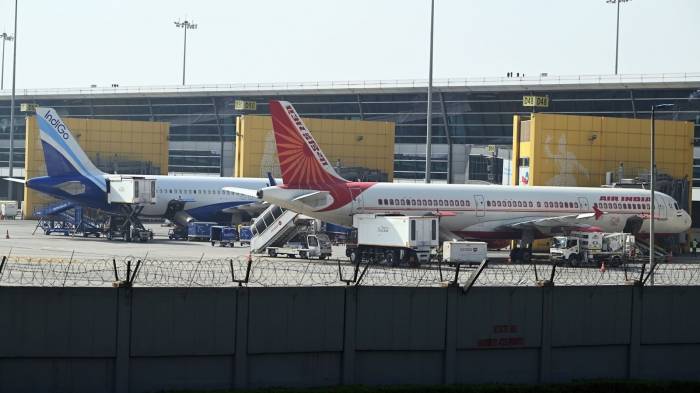Fatal dive of Chinese jet brought it close to speed of sound before it crashed

ITAHARI: MARCH. 23 – According to a Bloomberg News review of flight-track data, the China Eastern Airlines Corp. jet that crashed Monday was travelling at nearly the speed of sound in the moments before slamming into a hillside.
An impact of this magnitude can obliterate evidence and, in rare cases, damage a plane’s data and voice recorders, which are designed to withstand most crashes.
According to data from Flightradar24, a website that tracks planes, the Boeing Co. 737-800 was knifing through the air at more than 640 miles (966 kilometers) per hour and may have exceeded 700 mph at times.
“The preliminary data indicate it was near the speed of sound,” said John Hansman, a professor of astronautics and aeronautics at the Massachusetts Institute of Technology who reviewed Bloomberg’s calculation of the jet’s speed. “It was descending steeply.”
At sea level, sound travels at 761 mph, but as altitude increases, air temperature decreases, and sound travels at 663 mph at 35,000 feet (10,668 meters).
According to data transmitted by the plane and captured by Flightradar24, Flight 5735 was flying to Guangzhou from Kunming at an altitude of about 29,000 feet when it began a sudden descent. Prior to the dive, the jetliner was cruising at 595 mph.
The speed data is consistent with videos appearing to show the jet diving at a steep angle in the moments before impact and indicates that it likely hit the ground with huge force.
“It was an exceedingly high-energy crash,” said Bob Mann, president of R.W. Mann & Co. consultancy, who did not participate in the speed analysis.
“It looks like it literally evaporated into a crater. Do the flight data recorder or cockpit voice recorder or quick access recorder — do any survive? I just don’t know the answer.”
Modern black-box recorders, which store data on computer chips, have a good record of survival in high-velocity crashes, said James Cash, who formerly served as the U.S. National Transportation Safety Board’s chief technical adviser for recorders.
“The hard part is going to be finding it,” Cash said. The circuit boards that store the data frequently come loose from the recorder’s protective shell. However, even if the data is damaged, it can usually be extracted, according to him.
“It’s probably embedded somewhere in the ground,” he said. “However, I believe it would be fine.”
No Beacon Activated
At a press conference on Tuesday, Zhu Tao, a Civil Aviation Administration of China official, stated that the recorders had not been recovered. A beacon or “ping” from the devices will not help searchers because they are only activated underwater.
According to company spokesman Adam Kress, the two recorders on the China Eastern 737-800 – a cockpit voice recorder and another that captures flight data – were supplied by Honeywell International Inc.’s aerospace division and installed on the plane when it was new.
Crash investigators have over decades perfected the examination of wreckage in search of clues, but some impacts can obliterate evidence.
The crash of an Ethiopian Airlines 737 Max in 2019 was traced back to a sensor on the plane’s nose, but the sensor was never found after the jet hit the ground at a high speed, according to a preliminary report from that nation.
Accident investigators should be able to find more precise speed data from the jet’s flight recorder. If it isn’t available for some reason, aerodynamic experts can perform extensive analysis to estimate speed.
Flightradar24’s data includes the jet’s speed, but it’s measured horizontally across the ground. Bloomberg’s computations give a rough idea of how fast it was flying through the air by taking into account its horizontal speed over the ground as well as how fast it was descending.
The speed estimates were based on how fast the jet travelled between two points and didn’t take into account wind direction or other atmospheric conditions. The Bloomberg review was conservative and actual speeds may be higher.
While unconfirmed footage showed the plane diving at a steep angle near the ground, it was unclear how fast it was travelling at the time of impact. Flightradar24 recorded the last data transmission at about 3,200 feet altitude.
The jet stopped descending and briefly climbed before resuming the dive about 40 seconds before the last transmission. According to the preliminary review, the flight slowed slightly in the later stages.
It was still travelling at a much faster rate than usual. At altitudes less than 10,000 feet, jets typically do not exceed 288 mph. According to Flightradar24 data, the China Eastern jet was flying at 470 mph or higher at those altitudes.









